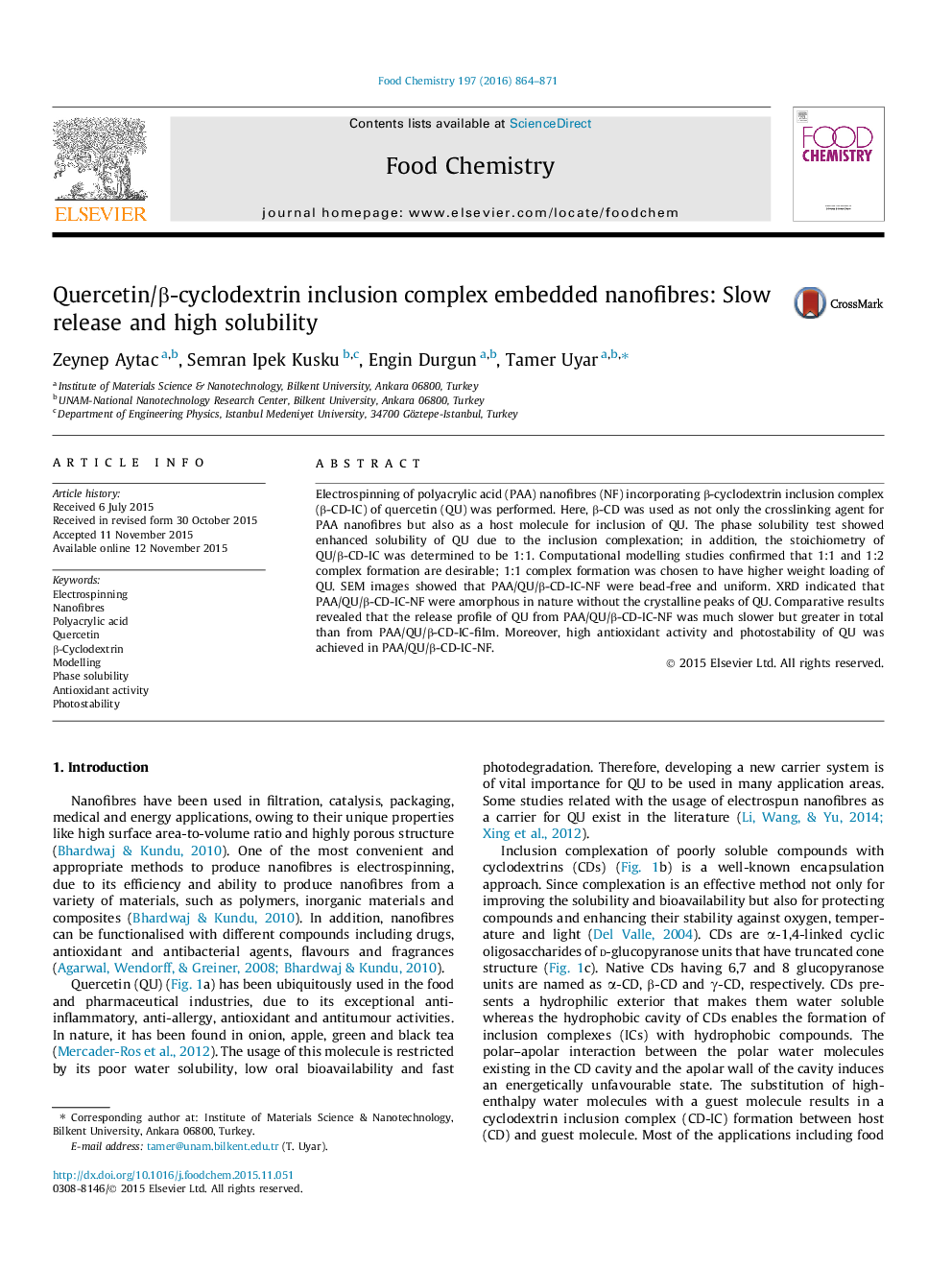| Article ID | Journal | Published Year | Pages | File Type |
|---|---|---|---|---|
| 1183528 | Food Chemistry | 2016 | 8 Pages |
•Quercetin (QU)/β-CD-IC was incorporated into electrospun PAA NF via electrospinning.•β-CD was used for both crosslinking of nanofibres and inclusion of QU.•Stoichiometry of IC was determined as 1:1 by phase solubility and modelling studies.•Release of QU from PAA/QU/β-CD-IC-NF was slower and more than PAA/QU/β-CD-IC-film.•PAA/QU/β-CD-IC-NF exhibited quite high antioxidant activity and photostability.
Electrospinning of polyacrylic acid (PAA) nanofibres (NF) incorporating β-cyclodextrin inclusion complex (β-CD-IC) of quercetin (QU) was performed. Here, β-CD was used as not only the crosslinking agent for PAA nanofibres but also as a host molecule for inclusion of QU. The phase solubility test showed enhanced solubility of QU due to the inclusion complexation; in addition, the stoichiometry of QU/β-CD-IC was determined to be 1:1. Computational modelling studies confirmed that 1:1 and 1:2 complex formation are desirable; 1:1 complex formation was chosen to have higher weight loading of QU. SEM images showed that PAA/QU/β-CD-IC-NF were bead-free and uniform. XRD indicated that PAA/QU/β-CD-IC-NF were amorphous in nature without the crystalline peaks of QU. Comparative results revealed that the release profile of QU from PAA/QU/β-CD-IC-NF was much slower but greater in total than from PAA/QU/β-CD-IC-film. Moreover, high antioxidant activity and photostability of QU was achieved in PAA/QU/β-CD-IC-NF.
Graphical abstractFigure optionsDownload full-size imageDownload as PowerPoint slide
